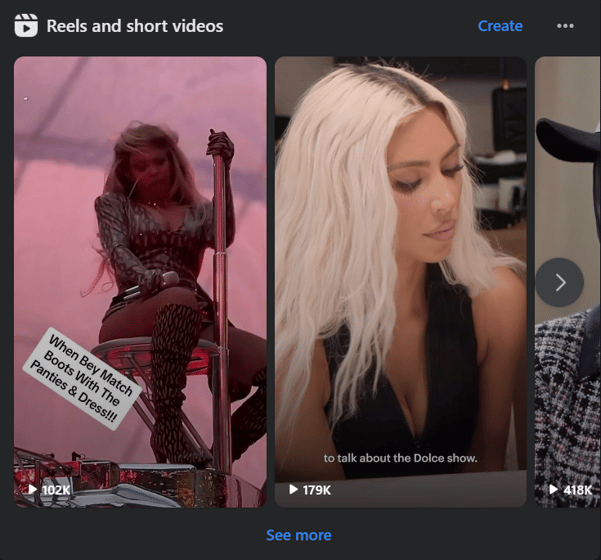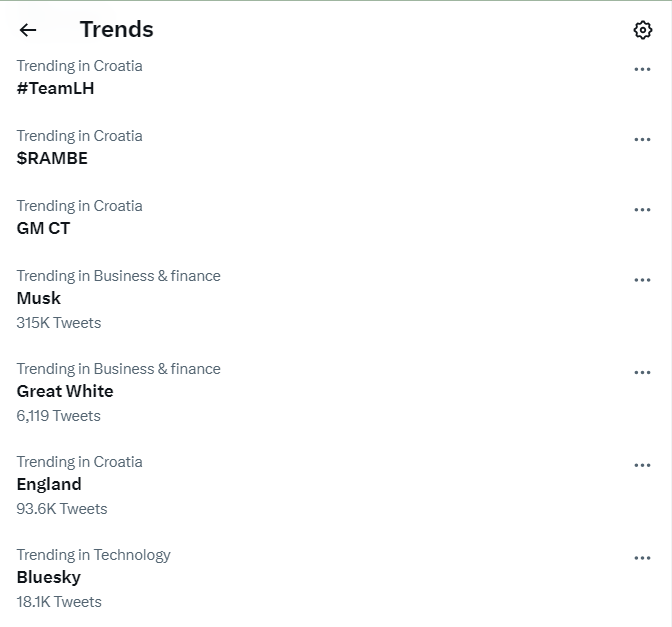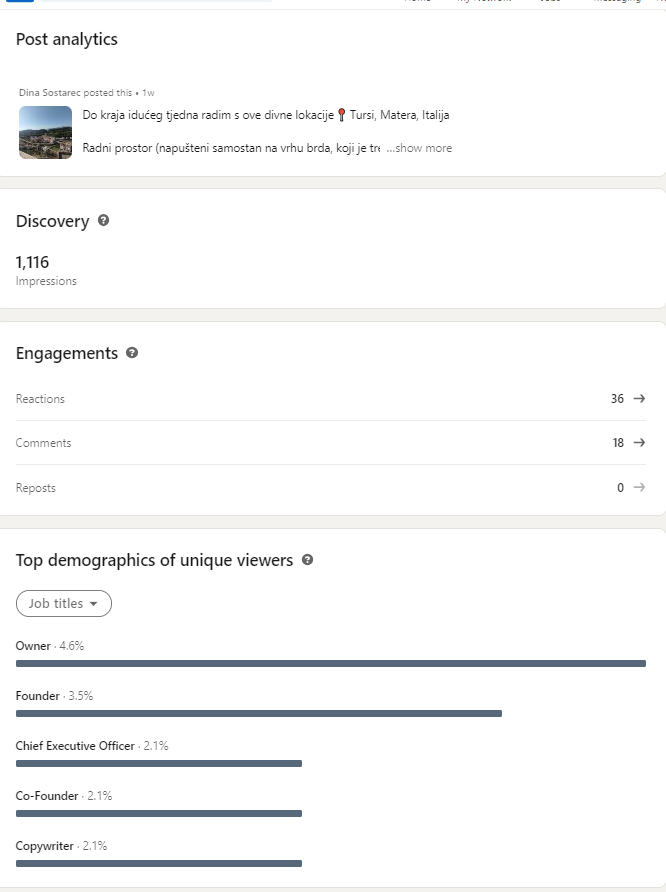Are you struggling to get good social media engagement? Do your posts seem to fall flat, receiving minimal likes, comments, and shares?
You’re not alone. Many businesses face similar challenges.
In this blog post, we’ll share proven tips and strategies to supercharge your strategy and engage your audience.
From crafting compelling content to learning how to monitor your performance, we’ll guide you through all the steps you need to take to captivate your audience and create a community of active followers.
What Is Social Media Engagement?
Social media engagement involves any type of interaction with your content and social media accounts. It’s often equated with the overall social media performance.
Here are just some actions that fall into the category of social media engagement:
- Likes
- Shares/Retweets/Reposts
- Comments
- Increase In Followers/Subscribers
- Mentions
- Clicks
- Messages
Now, let’s exemplify how engagement may look on different social media platforms.
- On Facebook, social media engagement may include likes, comments, and shares on your posts, profile clicks, or direct messages.
- On Instagram, engagement can also include views of your Reels, story interactions (such as responses to stickers, swipes, and taps forward or backward), or the use of your branded hashtags.
- On TikTok, engagement could also entail how many times a viewer saved your video or the frequency and duration of views.
It’s important to understand the differences between different social platforms in order to know how measure, monitor, and analyze your engagement correctly.
You should also consider your more specific goals when it comes to boosting your engagement. For example, you may not care about likes or comments so much as mentions or clicks.
We’ll talk more about this below.
Why Is Social Media Engagement Important?
Social media engagement is important because it shows you whether your marketing efforts are paying off. High engagement, for example, demonstrates that users find your content valuable, entertaining, and/or relevant.
Furthermore, social media platforms also favor content that gets high engagement.
Here’s a rule of thumb to keep in mind:
- High engagement boosts your organic reach, i.e., your chances of appearing on users’ social media feeds increase, especially if they themselves already interacted with your content.
So, engagement makes your brand more visible—but also helps you foster a community, build rapport with your audience, and turn passive viewers into active participants or brand advocates.
It’s through this interaction that brands can build meaningful relationships, promote brand loyalty, and ultimately, drive conversions.
An engaged audience is an audience that converts.
So, how do you boost your social media engagement? Let’s explore that in more depth.
Start With Creating A Good Social Media (Engagement) Strategy
The only way to intentionally boost social media engagement—rather than relying on the chance of sporadic viral content—is to create an effective social media strategy.
We’ll show you how you can design one below.
Know Your Battlefield: The Differences Between Social Media Channels
Every social media platform is different, and, more importantly, has its own unique algorithm.
Think of an algorithm as a super smart computer that decides what content shows up on users’ feeds. It does so by analyzing a bunch of factors, like past interactions with your content or your posting time. This helps the algorithm determine which posts and updates are the most relevant and interesting to a particular user, or to users in general.
The posts that are determined to be highly relevant or highly interesting have the best chances of appearing on users’ feeds–and that’s exactly why you need to understand the differences between different social media networks.
We’ll give you a basic breakdown of how each popular social media platform works, but keep in mind that these are just my and other people’s observations. No one really knows how different social media channels prioritize content, except perhaps for people working directly on the algorithms.
Still, even if they may be slightly off, these insights will surely bring you closer to achieving social media success.
- Instagram seems to favor carousel posts, Instagram Stories with interactive features, and Reels. Reels are especially favored at the moment, so the platform rewards users who leverage them with increased visibility.

Instagram also has a separate “Reels” tab.
- TikTok usually prioritizes content based on trending sounds, hashtags, and user interaction. It also rewards novelty and creativity, so new and unique content often performs well.

A snapshot of TikTok’s Explore page can give us a better idea of content that tends to get promoted, such as challenges.
- Facebook, like other platforms, seems to favor content that receives high engagement, but also posts from Facebook groups and, as of recently, short videos.

Facebook pulls Reels from Instagram and promotes short, platform-native videos.
- Twitter is all about trending topics and timely content. Engaging with pop culture and current events, for example, can significantly boost your visibility. The usage of multimedia content, especially GIFs, may also expand your reach.

Twitter also has a dedicated “Trends” tab showing users trending topics on the platform.
- LinkedIn seems to prioritize expert-written, high-quality content that offers unique insights. Conversely, it limits the reach of posts with outbound links.

Useful, actionable posts seem to be doing especially well on LinkedIn.
Make sure to always adapt your content strategy to the channel you’re using.
Know Your Tribe: Understanding Your Target Audience
You can’t get good audience engagement if you don’t know who your audience is. We aren’t just talking demographics here, but a deep understanding of what makes your audience tick—their interests, values, preferences, and behavior.
So, identify key traits such as age, location, and occupation. Then dive deeper:
- Think about the pain points. What problems can your brand solve for your target audience?
- What content formats do they prefer – videos, infographics, blogs?
- Which influencers do they follow? What are their browsing habits?
This knowledge is fundamental to tailoring your content to engage your audience effectively and, ultimately, to turn your social media channels into powerful customer engagement tools.
Use social media analytics tools to gain deeper insights and consider conducting surveys or polls for direct feedback.

Example of native analytics on LinkedIn.
Monitor And Measure Social Media Engagement
Monitoring and measuring social media engagement is crucial if you want to calculate the ROI of your social media marketing efforts.
Let’s see what to keep an eye on and measure regularly.
1. Total Engagement + Engagement Rate
Total engagement refers to how many interactions your post(s) receive. It’s a good metric to track, but an engagement rate may be more informative.
The engagement rate tells you the percentage of your followers that engage with your post.
Unlike total engagement count, your engagement rate also accounts for the size of your audience and the reach of your content.
In a nutshell, that means that your engagement rate will give you a better understanding of the effectiveness of your content social media marketing strategy. Here’s how to calculate it:
Social Media Engagement Rate = (Total Engagement / Total Followers) * 100%
In this formula:
- Total Engagement represents the sum of the likes, comments, shares, and other interactions your post or a group of posts receives.
- Total Followers refers to the number of people following your social media account at the time of the post.
Calculate your engagement rates and proceed to tip #2.
2. Benchmark Against Industry Standards
Understanding how you’re performing relative to your competitors or industry benchmarks can provide context to your data and give you a better understanding of your engagement efforts.
So, to help you out, the average engagement rate across different social media platforms is between 1% and 3.5%.
If your engagement rate is above 3.5%, it’s considered above average. Assess your content and strategy to pinpoint why it’s working so well.
If your engagement rate is below 1%, assess your content and strategy to see how to improve it.
Remember that the number of followers or subscribers you have will almost always impact your engagement rate. Usually, the more followers you have, the lower your engagement rates will be.
3. Track Inquiries
Another way to tell if your social media strategy works is to track the number of inquiries you receive.
A good strategy should increase the number of messages or customer inquiries. If you don’t see an increase, it may be time to tweak your strategy.
4. Assess Brand Impact
The brand impact can be a bit elusive to measure because the customer journey is rarely linear—brand perceptions are cultivated over time and across multiple touchpoints.
However, one way to quantify brand impact is to track impressions, representing the number of people coming into contact with your brand.
Although impressions are not equivalent to engagement, the two do correlate. Typically, the more engagement your content receives, the more impressions it will get, and vice versa.
Use Social Media (Engagement) Tools
If you’re serious about boosting your social media engagement, you should consider investing in social media (engagement) tools.
Such tools will often let you schedule your posts, analyze your overall social media performance at a glance, and optimize your strategy more easily.
These are currently the most popular social media tools:
- Hootsuite: A comprehensive tool for tracking performance across multiple social channels, offering analytics and personalized posting recommendations.
- Buffer: Great for scheduling posts, analyzing performance, and managing all your accounts in one place.
- Sprout Social: Provides in-depth analytics and helps streamline engagement through a unified social inbox.
- Simplified: Lets you schedule your posts, use AI to generate memes, presentations or quotes, and more.
You can also combine such all-in-one tools with more specialized software to drive interactions. Sniply, for example, lets you shorten the links you share on social media and add custom CTAs that may be more compelling than simple link previews.
However, if you don’t feel like investing in paid tools just yet, make sure to utilize free, platform-native tools—such as Facebook or TikTok Audience Insights.
Plan Your Social Media Posts Carefully
Crafting your social media posts shouldn’t be a haphazard affair. Each post is an opportunity to engage your audience and should be treated as such.
- Start with clear objectives. Determine what you want each post to achieve, be it likes, shares, comments, private conversations, or more website visitors.
- Plan the content, tone, and timing of your posts based on your target customer and target market. Focus especially on determining the type of content your audience cares about. Would they be more interested in educational, entertaining, or inspiring content? Answer that question and plan accordingly.
- Use a content calendar to organize and schedule your posts. This will help you ensure consistency and coherence in your messaging, keep you organized, and allow you to plan ahead for special events, holidays, or marketing campaigns, ensuring that your content is timely and relevant.
- Incorporate visuals for added impact. Visual content is 40 times more likely to be shared on social media than any other type of content. That means you should regularly include images, GIFs, videos, and other types of visuals in your posts— unless you’re on text-driven platforms like Twitter. Again, consider the differences between the channels you’re using.
- Follow the 80/20 rule. Approximately 80% of your social media content should be non-promotional, i.e., provide value, entertain your audience, engage them, or inform them. Only 20% should be promotional, i.e., promote your offers or brand, because an overly promotional social media presence can lead to audience disengagement. Ensure you have a balanced mix of content that provides value and fosters a genuine connection with your audience and promo posts.
Again, planning your content is easier with specialized tools, such as Simplified.

Simplified’s publishing calendar lets you schedule your posts in advance, plus prepare for upcoming holidays or special days.
Regularly Optimize Your Strategy
A successful social media strategy isn’t set in stone. It should evolve based on your audience’s feedback and engagement metrics.
- Regularly review your key performance indicators (KPIs) to see what’s working and what isn’t.
Are your posts getting the likes, comments, and shares you anticipated? If not, delve deeper into the data.
Perhaps you’re posting at the wrong times, or maybe your content isn’t resonating. Take note of what type of content gets the most engagement and adjust your strategy accordingly.
- Also, remember that feedback isn’t just numbers. Pay attention to what your audience says in the comments or direct messages to gain more qualitative insights.
11 Tips To Boost Your Social Media Engagement
Here are some extra tips to boost your engagement and get more out of your social media efforts.
1. Crafting Captivating Content: Share Engaging Posts
Captivating social media content is a crucial part of building engagement. Here are a few tips to help you create it:
- Post content that your audience will find informative, entertaining, or inspiring.
- Use visuals, especially video content, to capture attention.
- Sharing user-generated content, behind-the-scenes posts, interactive polls or quizzes, and posts that tap into current trends or pop culture references can be particularly effective.
2. The Sharing Economy: Create Shareable Content
Shareable content is the key to expanding your reach. Make content that’s so good your followers can’t resist sharing it.
This might include infographics, quizzes, inspirational quotes, or awe-inspiring images.
Shareable content tends to have a value-add: think ‘How-to’ guides, DIY tips, or thought-provoking articles. Success here can be quantified by tracking the share or retweet count.
3. Timing Is Everything: Know When To Post On Social Media Sites
Each platform has optimal times for posting.
For instance, Facebook tends to see the highest engagement on weekdays between 10 am – 3 pm. Twitter, conversely, might peak during the commute hours.
Use analytics tools to track your audience’s behavior and determine the best times for your posts—and don’t forget to factor in different time zones if you have a global audience.

Use tools like WorldTimeBuddy to easily compare different time zones.
4. Post Ideas That Spark Engagement: Learn From The Best
There’s no harm in taking inspiration from those who are already successful. Look at brands with high engagement, analyze their strategies, and model what they’re doing well.
Here are three examples of posts that brands create to spark engagement:
- Asking questions. Brands post open-ended questions or polls to foster interaction and start conversations with their followers. This gives people an easy way to comment and express their opinions.
- Behind-the-scenes content. Exclusive sneak peeks and photos from the brand’s talent, crew, or company culture give followers a feel for the humanity behind the brand. This personal content resonates and engages people.
- Exclusive deals. Brands drive engagement by giving their followers early access to sales, promotions and discounts unavailable to the general public. The sense of being “in the know” motivates people to follow, like and share the brand’s posts.
Pro tip: Focus on and mimic brands in your niche or industry.
5. Partnering Up: Boost Engagement With Collabs
Collaborations can significantly boost engagement by exposing your brand to a new audience.
Partner with influencers, complementary brands, or experts in your field and host joint live streams, share guest posts, or co-create new products or services.

An example of a YouTube collab between influencers.
6. Keep ‘Em Laughing: Use Humor To Boost Engagement
Humor is a universal language and a fantastic tool for boosting engagement. A well-placed meme, a funny caption, or a playful video can bring smiles and shares.
Just ensure your humor is in good taste and aligns with your brand voice.

Ryanair, for example, is known for using humor to foster positive interactions and drive social media ROI.
7. Beyond The Traditional: Be Innovative To Engage Your Audience
Social media thrives on innovation. New post formats, unique content, and out-of-the-box ideas can help your brand stand out from the crowd.
For example, you could experiment with AR filters, 360° photos, or even host a virtual reality event.
In general, you always want to keep tabs on new social media trends. For example, in recent years, we’ve seen an influx of interactive quizzes and polls and short-form videos on Instagram.
Jumping on such trends lets you tap into the current interests and behaviors of your audience and make them more likely to engage with you.
8. It’s A Marathon, Not A Sprint: Consistency Boosts Engagement Over Time
It’s critical you maintain a consistent posting frequency, brand voice, and content quality on social media. Doing so will help you establish expectations, build trust and familiarity, and encourage repeat social engagement.
Here are a few tips to help you stay consistent:
- As mentioned, it’s crucial you keep a content calendar and plan ahead.
- Determine a realistic posting frequency. Aim for a posting schedule that you can sustain consistently over time.
- Establish brand guidelines for your social media presence, including brand voice, tone, and visual elements. Consistently apply these guidelines across all your posts to create a cohesive and recognizable brand identity.
9. Elevate Your Content: Leverage GIFs And Analytics
GIFs can make your content more engaging, so it’s a good idea to use tools like GIPHY to find or create relevant, entertaining GIFs that align with your brand.
Enter relevant keywords in the GIPHY search bar or create original GIFs in minutes using your existing content.

Source: GIPHY
10. Engagement Through Competitions: Run Contests And Giveaways
Nothing surprises people like a competition, so try running a contest on your social media channels, with winners getting exclusive deals or prizes.
Ensure participation involves some form of engagement, like liking, commenting, sharing, or tagging friends.
11. The Q&A Tactic: Boosting Engagement By Asking Questions
Asking questions in your posts is a great way to spark conversation. They can be industry-related, about user preferences, or simply fun and lighthearted.
Post these as standalone questions, or integrate them into captions or polls.
FAQs
What Affects Social Media Engagement?
Several factors influence social media engagement.
- Firstly, the quality and relevance of content play a significant role. Engaging posts, such as thought-provoking questions, captivating visuals, or informative articles, tend to attract more interactions.
- Additionally, timing is crucial. Posting during peak active hours when users are most likely to be online enhances engagement.
- Another factor is community interaction. Responding promptly to comments, initiating conversations, and fostering a sense of belonging encourage users to engage further.
- Lastly, the algorithm also influences social media engagement. Platforms like Facebook and Instagram prioritize content based on user preferences, making it important to create content that aligns with the interests of the target audience.
What Is Good Social Engagement?
Most marketers say that a good social media engagement rate is between 1% and 3.5%, as this is the average engagement rate across platforms and industries.
Final Words
Social media managers worth their salt will tell you that engagement is the heart of any successful social media strategy. The goal isn’t merely to post content but to create meaningful interactions with your audience.
Understanding your followers, creating content they love, responding to their comments, and continually refining your strategy based on data-driven insights are the keys to building a strong, engaged community around your brand.
So, put these tips into practice, and watch your engagement—and your startup—flourish.
